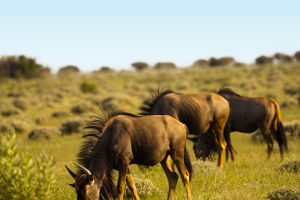We’re about to explore the fascinating world of the Splendid Fairy Wren, a small yet dazzling bird that brightens the Australian landscape. Famous for its vivid blue and black feathers and playful personality, this tiny bird is impossible to miss once we know what to look for.
Found across much of the continent—from New South Wales and southwestern Queensland to the coastal areas of Western Australia—the Splendid Wren thrives in dry, open habitats. Their energy and colors make every bushland or shrubland we walk through feel alive.
Where They Live
We can find these wrens in a wide variety of environments, from forests to scrublands. What all their homes have in common is plenty of vegetation to provide cover and safety. Unlike some eastern fairy wren relatives, Splendid Wrens do not adapt well to urban areas and have vanished from certain city locations. Their preferred spaces are full of low bushes and small trees, perfect for hiding, hunting, and resting. When we spot a wren flitting between shrubs, it’s clear that the dense cover is key to their survival.
Colors That Speak
Male Splendid Wrens really show off during breeding season. Their bright blue and black feathers are a feast for the eyes, while females, juveniles, and non-breeding males stay in muted gray-brown tones. At first glance, it’s easy to mistake the dull-colored birds for all females, making us think the males are polygamous.
But this species is socially monogamous, and the contrast between the male’s vivid breeding plumage and the neutral shades of others is a clever evolutionary trick. Interestingly, a few all-blue and black subspecies exist, and early researchers even mistook these for entirely different species.
Unique Social Life
We quickly notice that Splendid Wrens lead intriguing social lives. They are socially monogamous, forming clear pairs, but also engage in extra-pair mating. This means that although a male and female are paired, both often mate with other wrens, and the whole group may help raise the chicks. It’s a surprisingly complex arrangement, adding excitement and variation to their daily lives. Observing them, we can see how social bonds, cooperation, and competition all play out in a tiny, feathered community.
Romantic Tricks
Male wrens have charming and unusual courtship behaviors. We can watch them collect pink or purple flower petals and display them to potential mates. It’s a small yet powerful gesture designed to attract attention and demonstrate fitness. These displays, combined with singing and energetic hopping, make their courtship an entertaining spectacle. When we pause to watch, it’s almost as if the wren is putting on a tiny, colorful show just for us to enjoy.
What They Eat
We notice that Splendid Wrens mainly feed on insects, which they forage for in shrubs, grass, and leaf litter. Seeds also supplement their diet, giving them the energy to sing, hop, and chase around their territories all day. Watching them hunt is fascinating—they’re quick, alert, and constantly moving, never staying still for long. Their feeding habits reveal how such a small bird can maintain so much energy and playfulness throughout the day.
Conservation Status
We’re fortunate that the Splendid Wren is currently listed as “Least Concern” by conservation experts. Still, their reliance on dense vegetation makes them vulnerable to habitat loss from human expansion. While they can thrive in natural bushlands, urbanization and land clearing pose challenges to their survival. Being mindful of their needs allows us to help maintain the habitats that support these lively little birds.
Why We Love Them
We can’t help but admire the Splendid Wren for its bright colors, energetic personality, and clever social and courtship behaviors. Observing them gives us a glimpse into a world full of color, energy, and subtle social complexities. Whether we encounter them on a quiet bushwalk or in a remote shrubland, these small birds remind us that even tiny creatures can live vibrant, fascinating lives.
Spot the Splendid Wren!
Next time we explore Australia’s natural areas, let’s take a moment to spot the Splendid Wren. From their brilliant blue feathers to their playful social life and charming courtship displays, they are proof that small birds can live large, exciting, and colorful lives. Paying attention to their world enriches our own experience and brings joy to every outdoor adventure we have.
Splendid Fairy Wrens in the Nest
Video by Wild Home Videos


